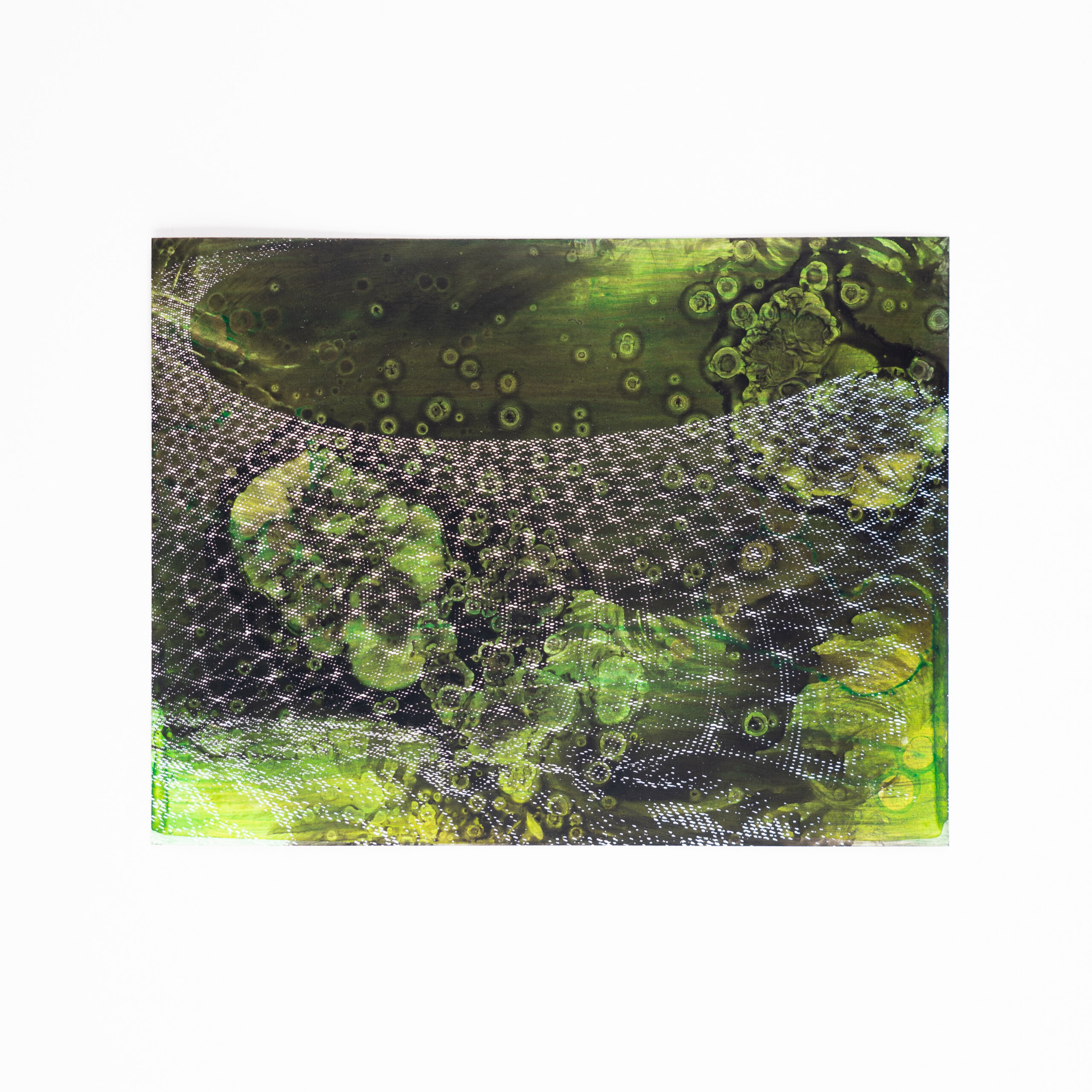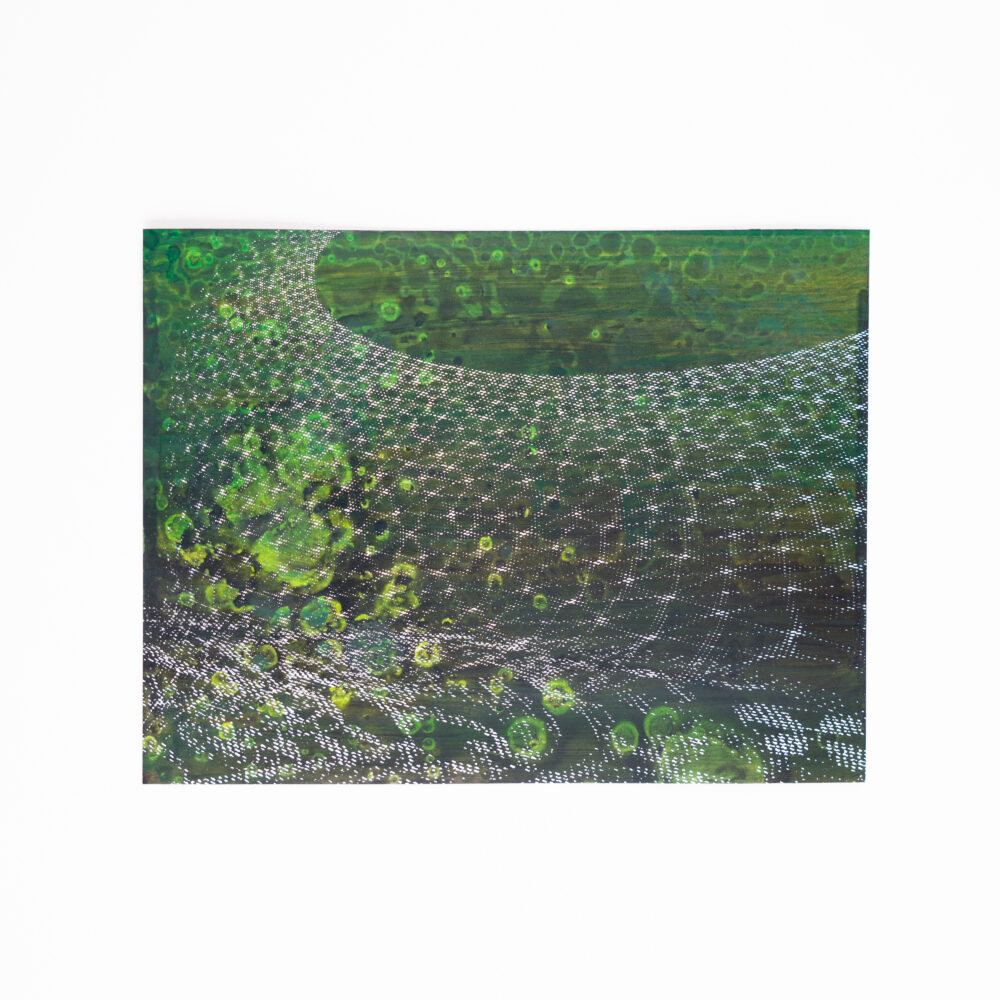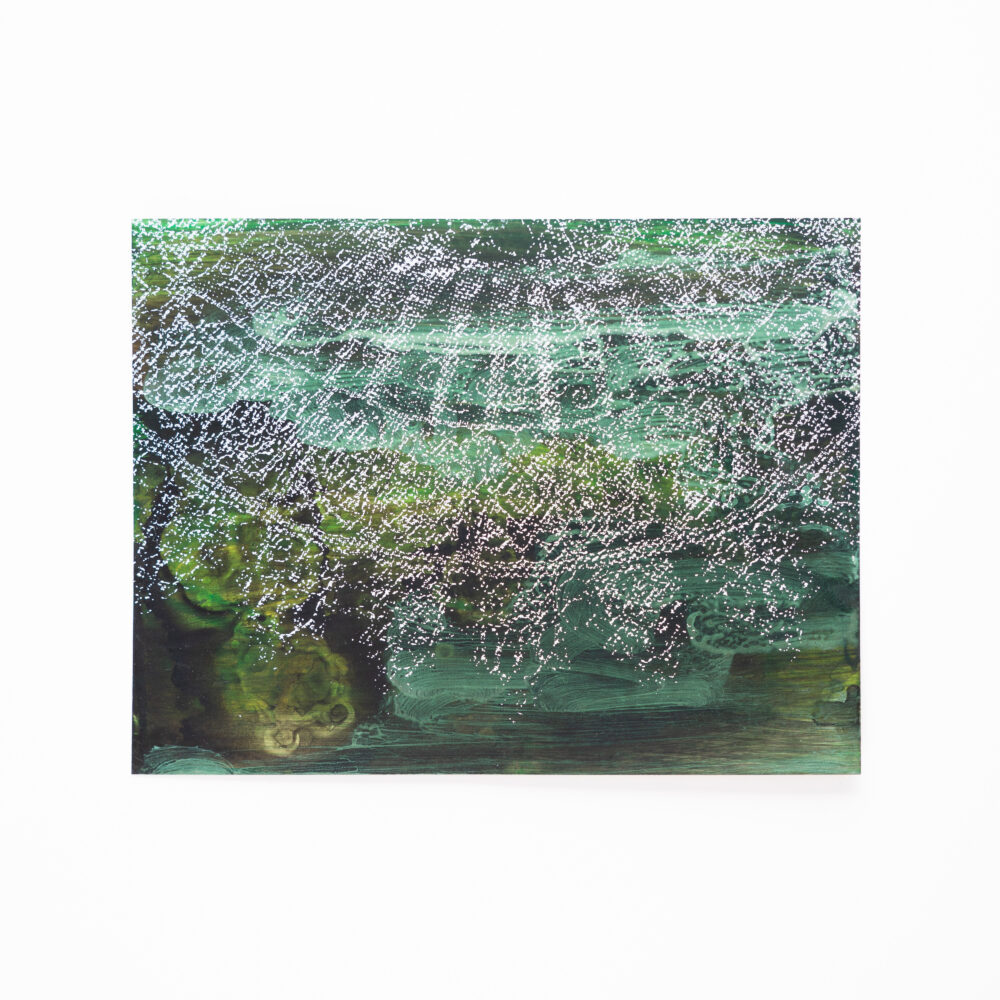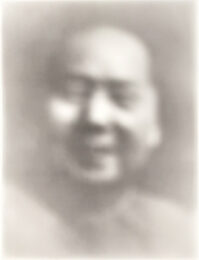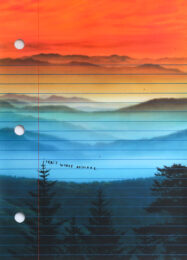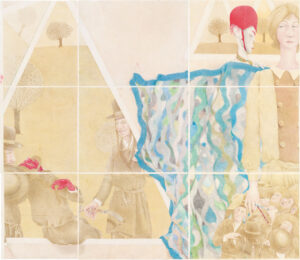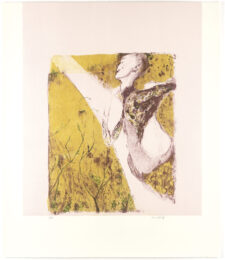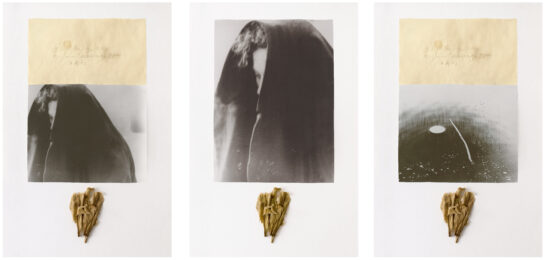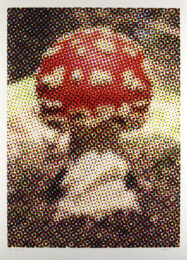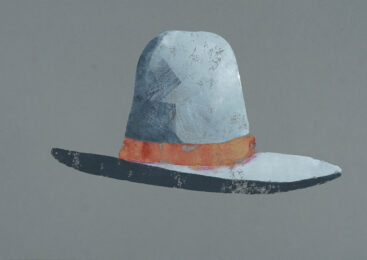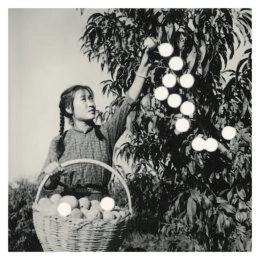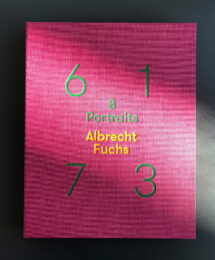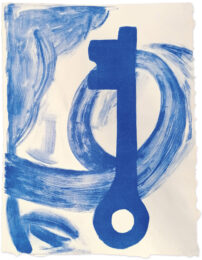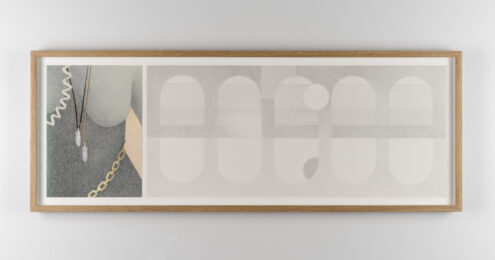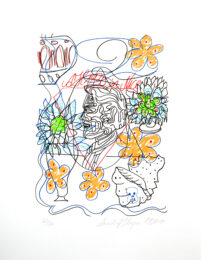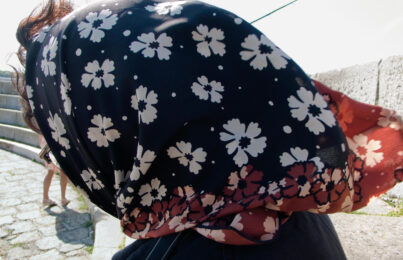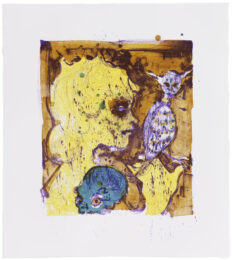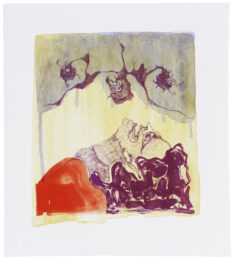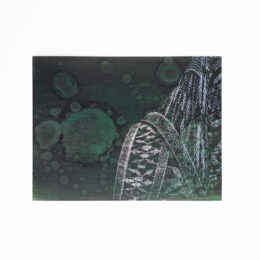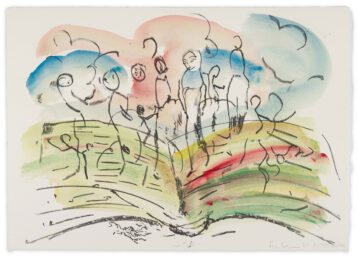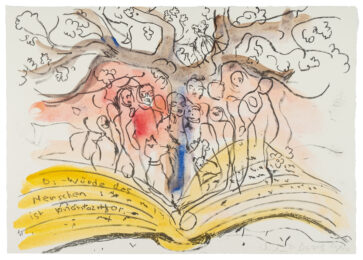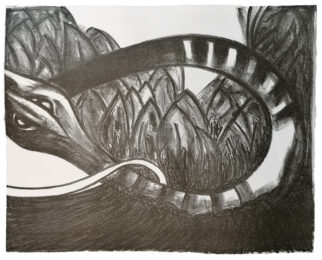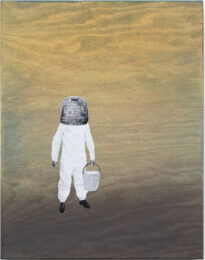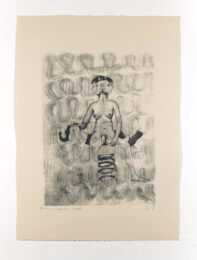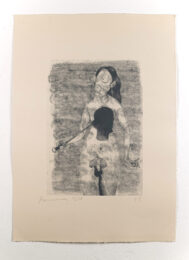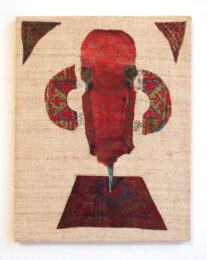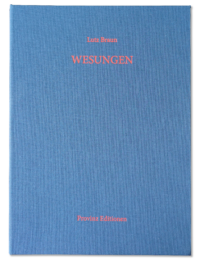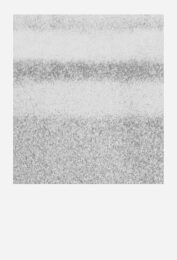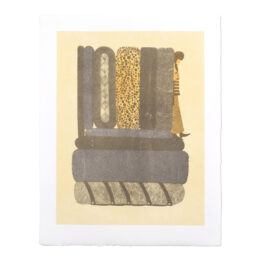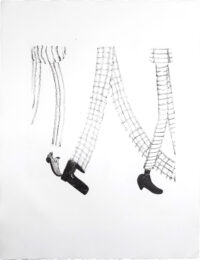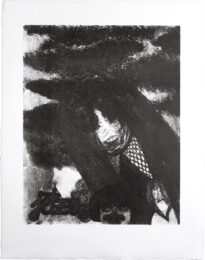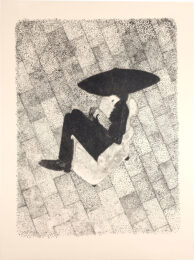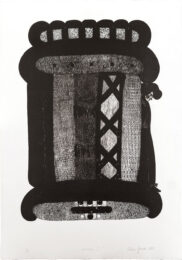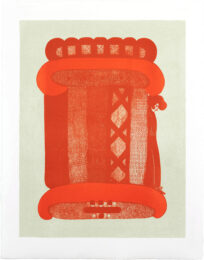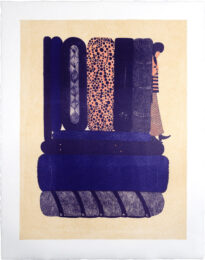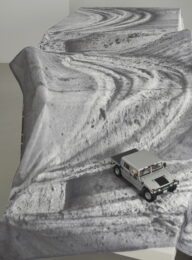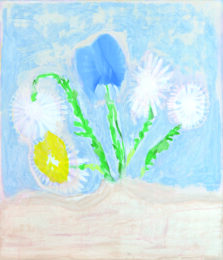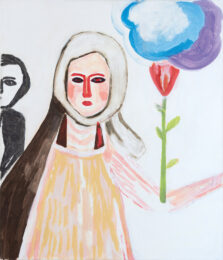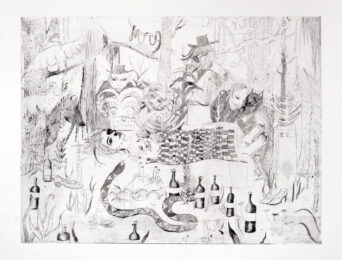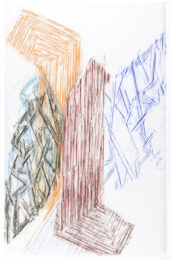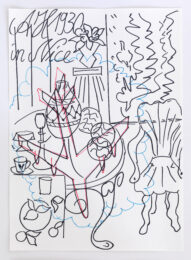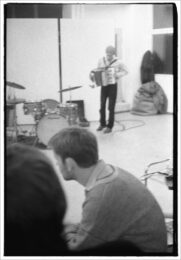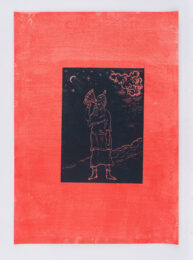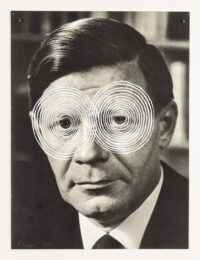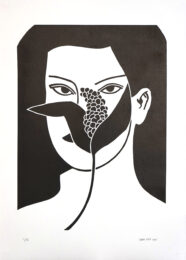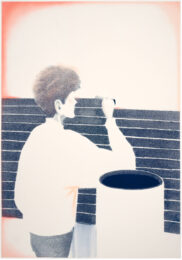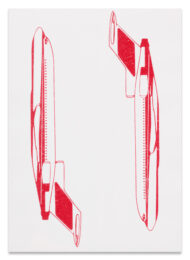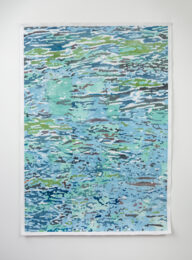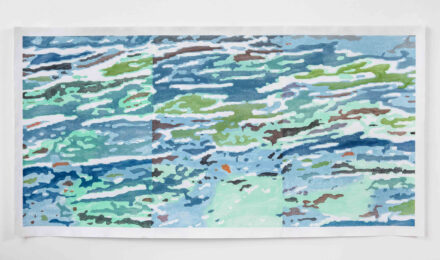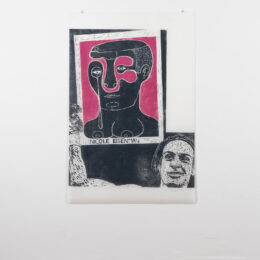Details — Click to read
Katja Davar
Footnotes in the Dark, 2023
Nine unique pieces
ink and interference acrylic paint on cardboard 350 g
22.7 x 17.3 cm
In the work of Katja Davar (born 1968 in London, lives in Cologne), natural and cultural science discourses come together. The artist condenses the heterogeneous content into complex imagery. The exhibition title “Lace it was” already draws attention to the fact that the animal depictions shown go beyond themselves. They are borrowed from paintings and picture cycles from different eras and cultures. For example, they come from Persia, from “Shahnameh”, the “Book of Kings” written around 1000 AD and from Habiballah von Savas’ illustration, dated around 1600, of the older traditional poem Mantiq al-tair (“Language of the Birds”). Another source is paintings by the English animal painter and engraver George Stubbs.
A key stylistic element of Katja Davar is the overlay of graphic and graphic levels, which create space for further associations in terms of form and content. While they are often constructive-geometric structures, these are historical lace patterns that were screen-printed with white paint over the drawing made with lacquer and ink. Old pattern books that the craft used as instructions for making lace and images from 17th century European portrait painting served as templates. The oldest written record of this varied and difficult technique – a distinction is made between needle lace and bobbin lace, among other things – is the pattern book “Le Pompe”, which was published in Venice in 1557. Lace tells a lot about the circumstances at that time. For many centuries, making it was the handicraft par excellence. It required time, patience and skill. It was traded accordingly expensively and was unaffordable for all classes below the nobility. So those who wanted to show off their wealth and the power associated with it did so with jewelry, with precious stones and metals and, of course, with lace.
Katja Davar’s picture cycle and the large-scale wall drawing of the filigree lace patterns point to these multi-layered levels of interpretation. Various techniques and representations from different chronological and cultural origins are interwoven. The view that is granted to us through lace and at lace allows us to share equally in what were once “paradisiacal” or original conditions and in their loss. This can be located in the 15th century and begins with the so-called “discovery of the world”, which is connected to the beginning of ruthless colonization by the Europeans. Despite their beauty, Davar’s works reveal historical structures and power relations and their colonial continuity, which continues to the present day.

